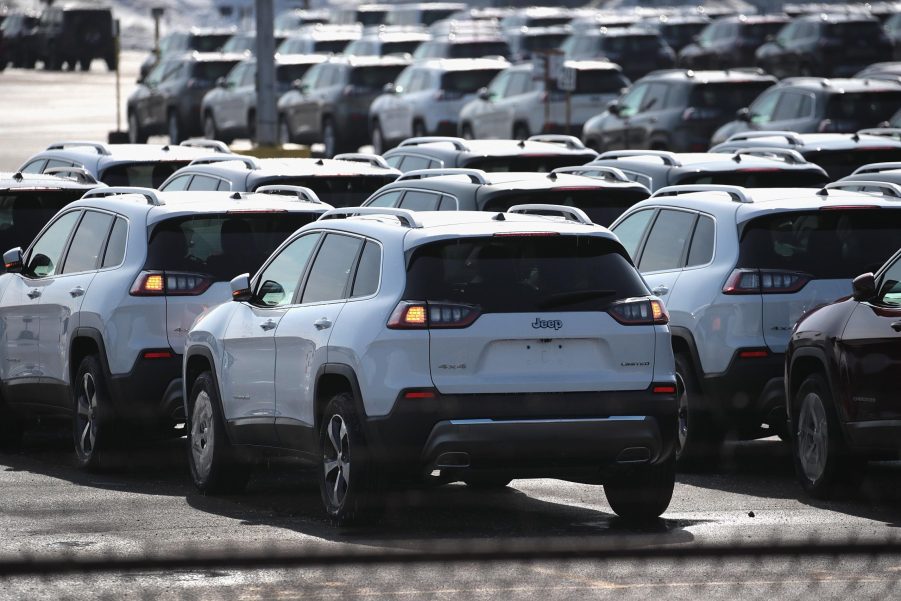
Jeep Lost Production of Over 150,000 2021 Cherokees, But Ford and Chevy Lost Big Too
An analytical company that tracks production for automakers has compiled a list of all of the lost production in 2021 resulting from the microchip shortage. It is a staggering amount, not only for Jeep, spotlighting the ongoing supply shortages facing all companies going into 2022. The production numbers represent total vehicle cutbacks as of December 17, 2021.
Which brands saw the largest cutbacks?

From data collected by AutoForecast Solutions, all of the manufacturers were affected, but the Jeep Cherokee represents the single model with the largest number of vehicles cut from production. The combined Chevy/GMC Equinox and Ford F-150 were a close second place. In all, there were 151,155 Cherokees cut in 2021.
Adding Equinox production under the GMC and Chevy umbrellas, GM lost production of 161,587 Equinox crossovers in 2021. Within GM, the Chevy Malibu cut back 116,598 of the sedan’s production. The popular Traverse lost over 42,000 units, with many other makes seeing losses of over 20,000 each.
Over at Ford, the F-Series cut back production of 82,446 trucks, and 64,853 Super Duty trucks for a total of 147,299 vehicles not produced. Almost 84,000 Explorers were cut, and Edge production saw a loss of 61,517 units. Transit and Mustang production also took hits with 53,337 and 28,291 vehicles that lost production respectively. But everything from the hot Mustang Mach-E to Bronco and Bronco Sport saw production cut as well.
All car brands saw significant production losses in 2021

Many brands at Stellantis saw significant production losses in 2021. Besides the aforementioned Jeeps, the Ram 1500 lost almost 60,000 units. Jeep Wrangler production was down just a hair under 60,000 copies. The Voyager and Pacifica minivans saw combined cuts of 112,073, while the Dodge Charger was down over 27,000 cars. Both the Dodge Challenger and Durango saw production losses of over 15,000 each.
Of course, all of this started with the COVID 19 pandemic. Automakers forecasted drastically lower sales volume as a result of the pandemic, and cut back orders for microchips in anticipation. Though sales were down, they were much higher than expected.
Shifting demand and increasing production

For the chip makers part of the equation, they focussed on the electronics industry to help maintain profits. When car manufacturers came back to negotiate for more chips, shifting back to making those chips took time. Thus, it was the perfect setup for a microchip shortage.
It cascaded over the auto manufacturers worldwide. As we head into 2022, supplies are slowly getting back to normal. But analysts say it could take months before manufacturers see their supplies reach the levels necessary to eliminate the production cutbacks.



